If you do a lot of planting in pots and containers, you know that potting mix doesn’t come cheap. It can almost make it cost-prohibitive to grow potted plants, ornamentals, and container vegetable gardens.

We can easily reduce that expense by maximizing the use of our potting soil from one year to the next. There’s no need to throw out that old potting soil you used last year!
Jump to:
- Potting Mix Can Often Be Used for Planting Again
- 15 Ways to Up-cycle and Reuse Old Potting Mix
- 1. Fill or Top Off Raised Beds
- 2. Recycle in Container Planters and Pots
- 3. Top Up Potted Plants
- 4. Propagate (Root) Plant Cuttings
- 5. Use to Pot Plants that Thrive in Poor Soil
- 6. Patch Holes and Low Spots in Landscapes and Garden Beds
- 7. Patch Urine Burns in Lawns
- 8. Spread in a Thin Layer Over the Lawn
- 9. Spread in the Garden
- 10. Add to the Compost Pile
- 11. Cover Compost Holes or Trenches
- 12. Use to Start a Vermicomposting Bin
- 13. Extra Soil for Planting Holes
- 14. Fill Holes from Rock Removals.
- 15. Fill Eroded Soil and Frost-Heaved Plants over Winter
- When (and Where) Not to Reuse Used Potting Mix
Potting Mix Can Often Be Used for Planting Again
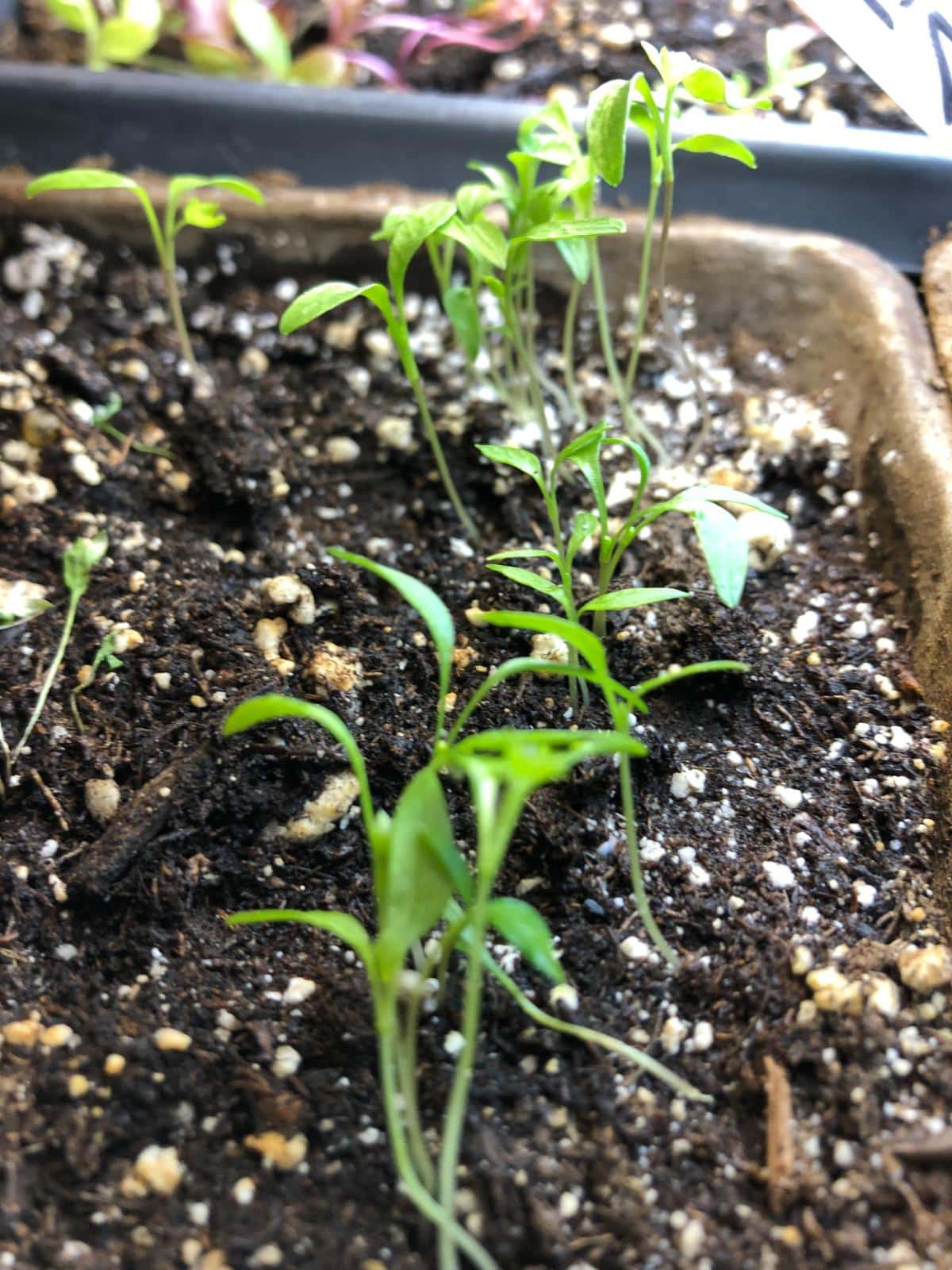
Experts like the University of Oklahoma and Louisianna State University say that as long as the plants that lived in the soil the year before were healthy, you can use the soil for planting again.
For planting, you’ll want to mix in some fresh soil and maybe do some amending, and you can sterilize it to kill old plant diseases and insects, too. However, if the soil is more than two years old, you might want to replace it.
15 Ways to Up-cycle and Reuse Old Potting Mix
Even the soil that is too old to plant in can be put to good use in the yard and garden. No matter what, there is something that you can do with old potting soil.
Here are some of the top ways to reuse it:
1. Fill or Top Off Raised Beds
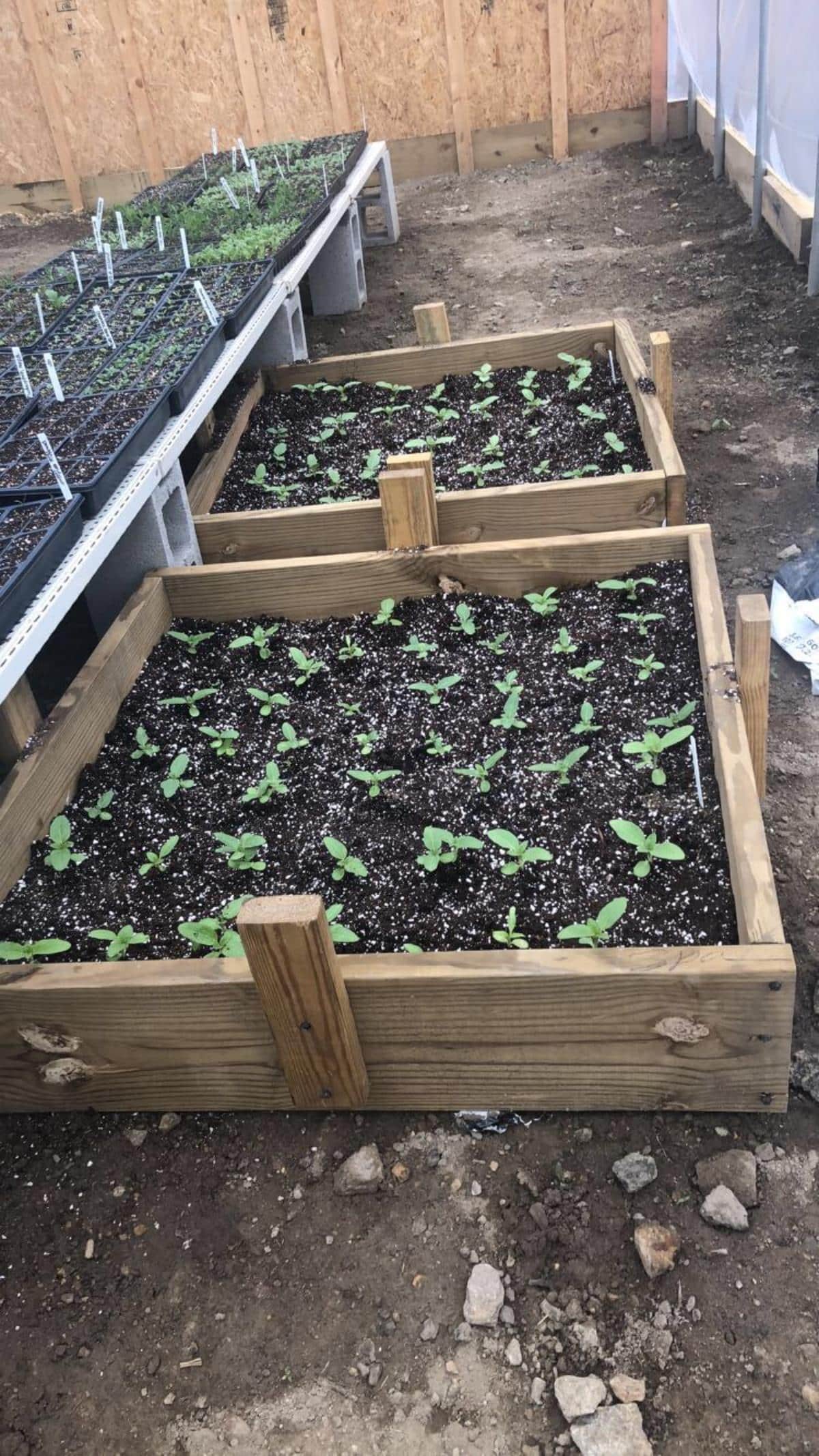
It takes a lot of soil to fill raised garden beds. Even after they’re filled, nutrients and organic matter get used up and washed away, soil settles, and you will often need to top up the soil in your beds at some point.
This is a great place to use used-up potting soil. The potting mix might not have much left to give, but when it’s mixed in with compost and soil amendments, it will do just fine and help fill that space.
2. Recycle in Container Planters and Pots
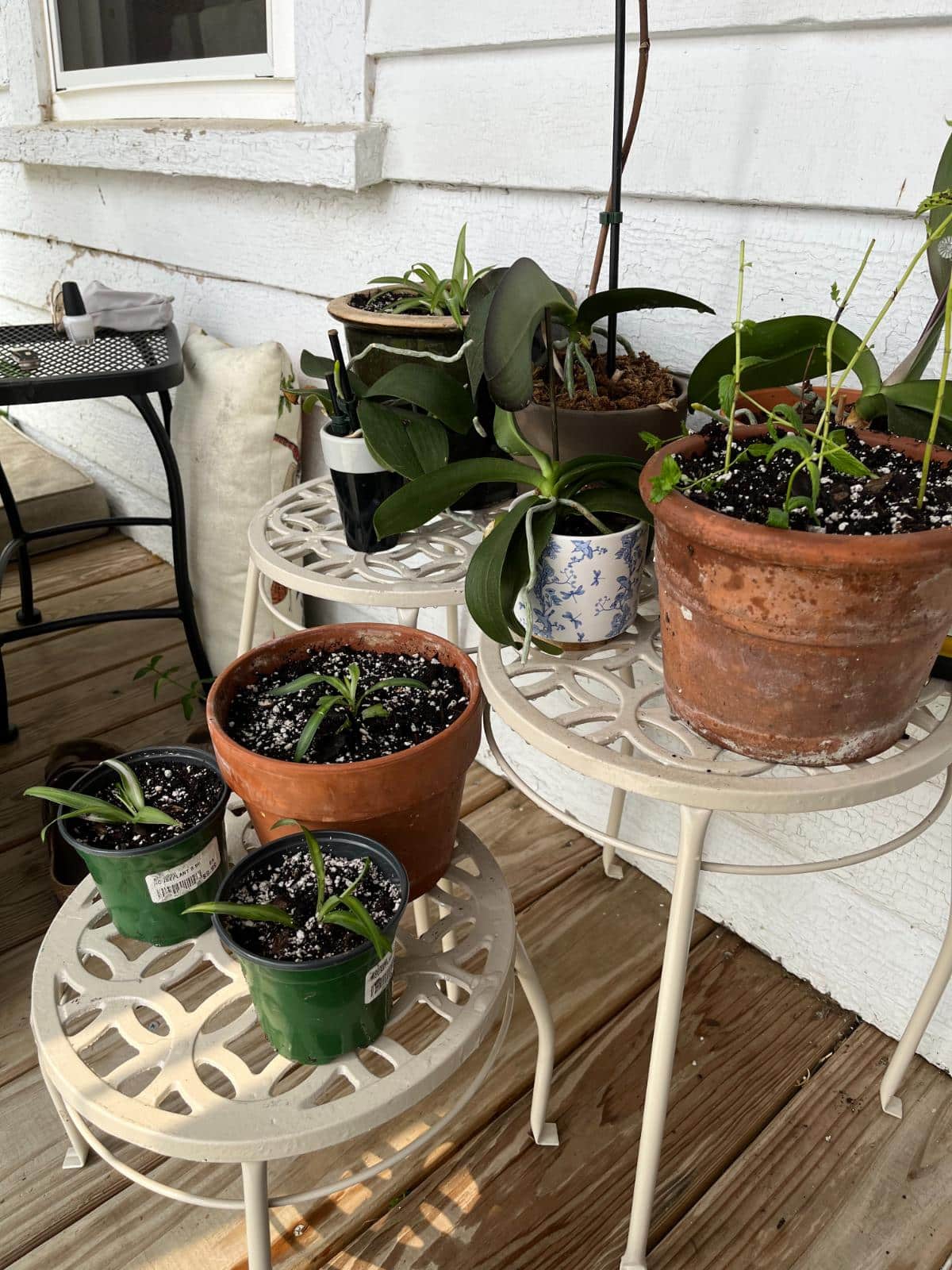
You can use soil to pot up new plants, too, as long as it’s not too far gone and all the soil components aren’t all used up.
To use old soil for new plants, it’s recommended that you mix in some fresh compost and fresh potting soil. That will help reestablish organic matter, bulk it up and lighten it up, and restore the nutrients that have been used up by last year’s plants.
It’s also smart to add some slow-release fertilizer because whatever was in the potting soil when you first bought it will be used up or washed out by now.
If you’re using old potting soil to plant in again, it’s best to mix at least 30% new soil into the old.
3. Top Up Potted Plants
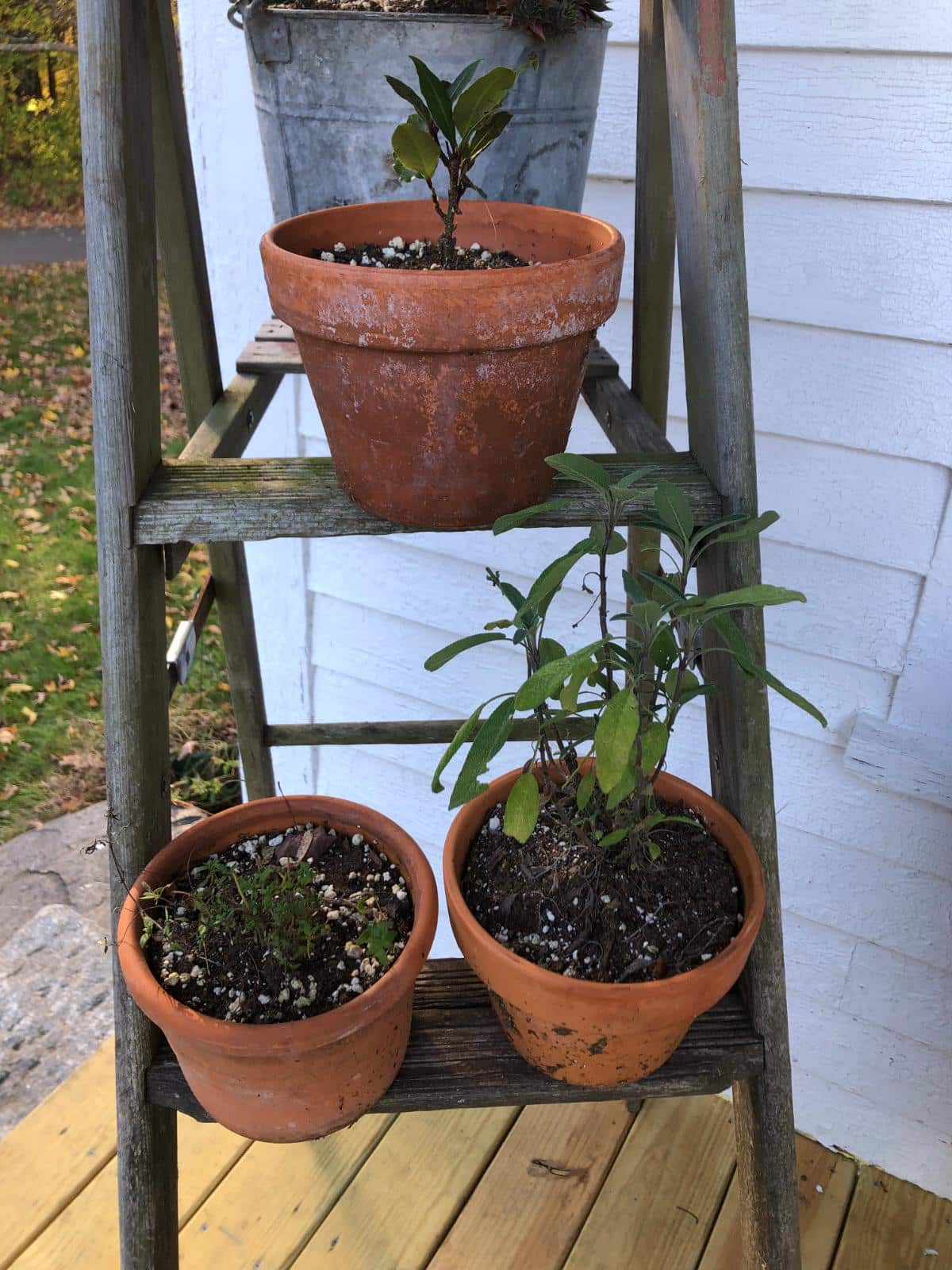
Container plants and potted plants use and lose soil over time. Soil gets compacted, too, and needs to be topped up. This is a good way to use old potting soil (preferably after it’s mixed in with some fresh and revitalized).
If you have potted perennials outdoors, this is an ideal way to reuse old potting soil.
You can use the soil for indoor potted plants, too, but it’s smart to sterilize it before it comes inside so you don’t bring in bugs or soil pathogens.
Again, it’s also wise to add some fertilizer with the refreshed old mix.
4. Propagate (Root) Plant Cuttings
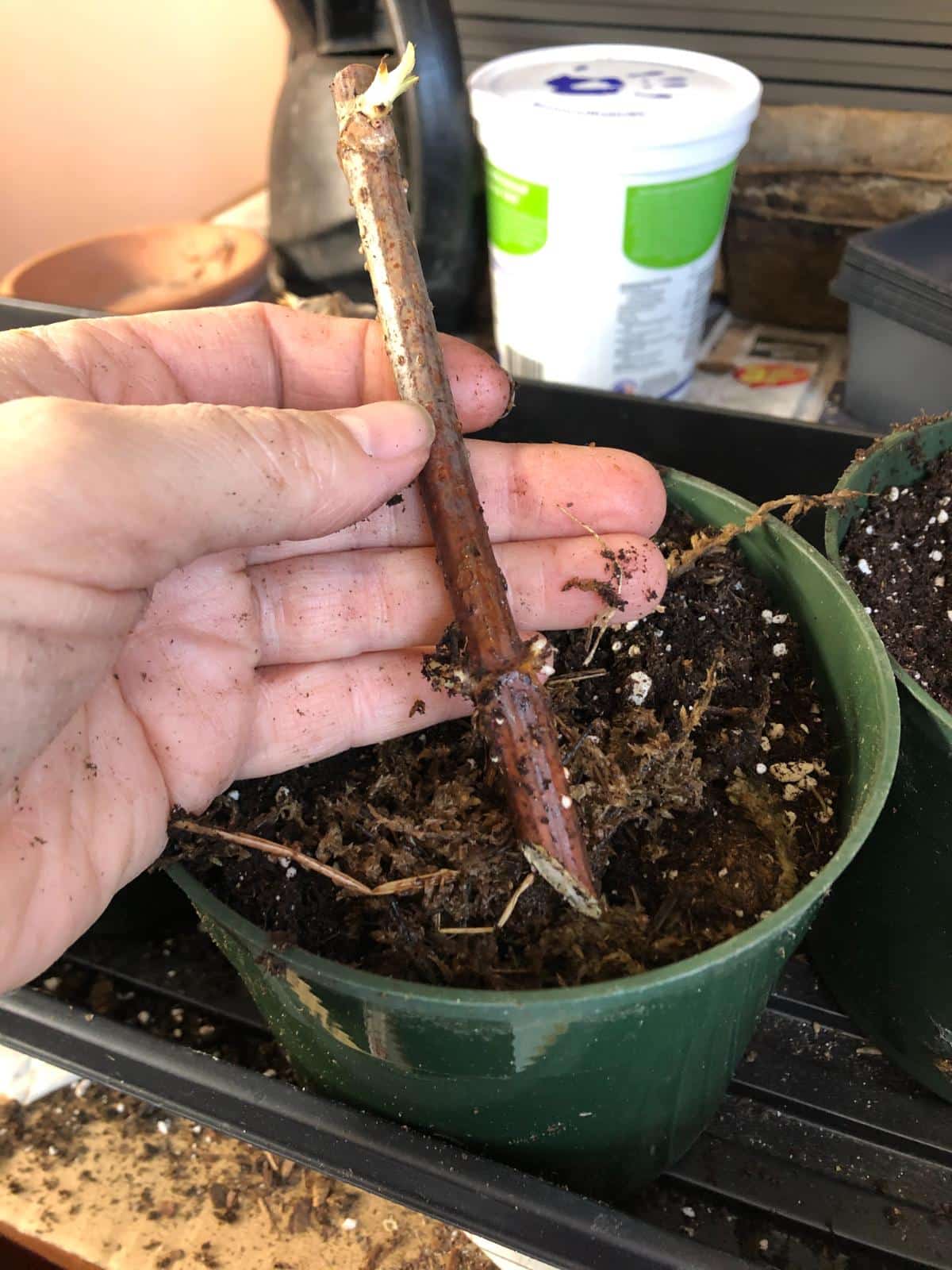
Propagating cuttings is an excellent way to grow more free plants for your home, yard, and garden. You can take cuttings to root for both tender green plants and woody plants, berries, shrubs, and bushes (dormant woody cuttings usually do best for those).
During the first stage of propagation, the cuttings don’t need nutrients from the soil. What they need more than anything is a clean, sterile medium that holds the moisture they need to grow roots. Rooting is often done in sand, vermiculite, coconut coir, and other soilless mediums. That means that depleted old potting soil is a perfect choice.
You want to start your cuttings strongly and keep them free from disease, so the previously used potting soil should be sterilized first, but that is easily done.
With old soil and free cuttings, you can start tons of cuttings and grow lots of new plants – for free!
5. Use to Pot Plants that Thrive in Poor Soil
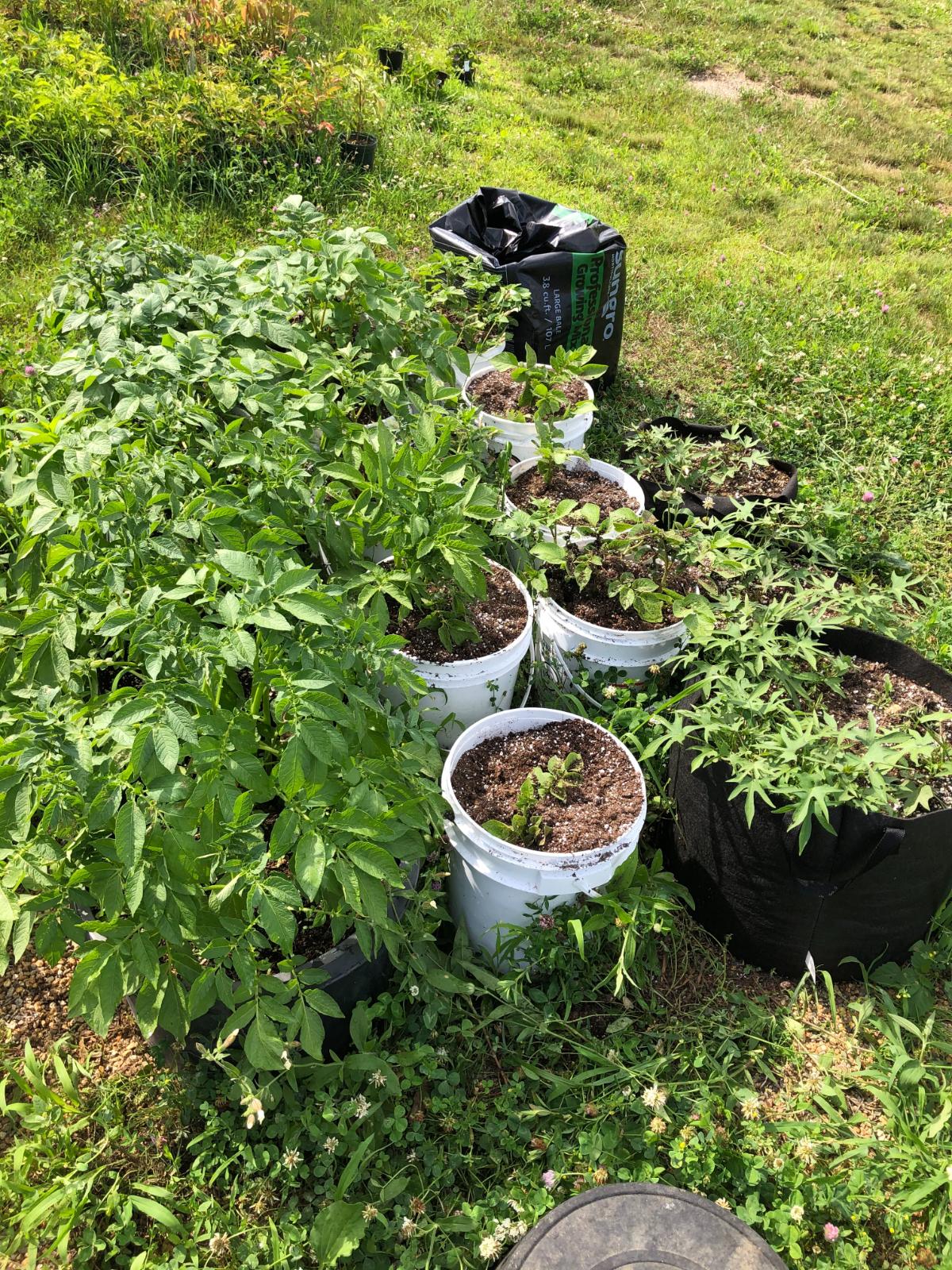
Plants don’t all have the same nutrient needs. Some plants, like tomatoes, are heavy feeders, while others, like a lot of Mediterranean herbs and wildflowers, don’t need much from the soil at all.
It’s smart to rotate the soil in your container planters just like you might rotate locations in a garden or raised bed. After a heavy feeder has taken what it needs from the soil, plant something that doesn’t have high demands in the soil for the next round.
Some examples of things that grow well in poor soil are lavender, echinacea, mint family plants, perennial sunflowers, bleeding hearts, hellebores, fennel, sage, rosemary, and many more.
6. Patch Holes and Low Spots in Landscapes and Garden Beds
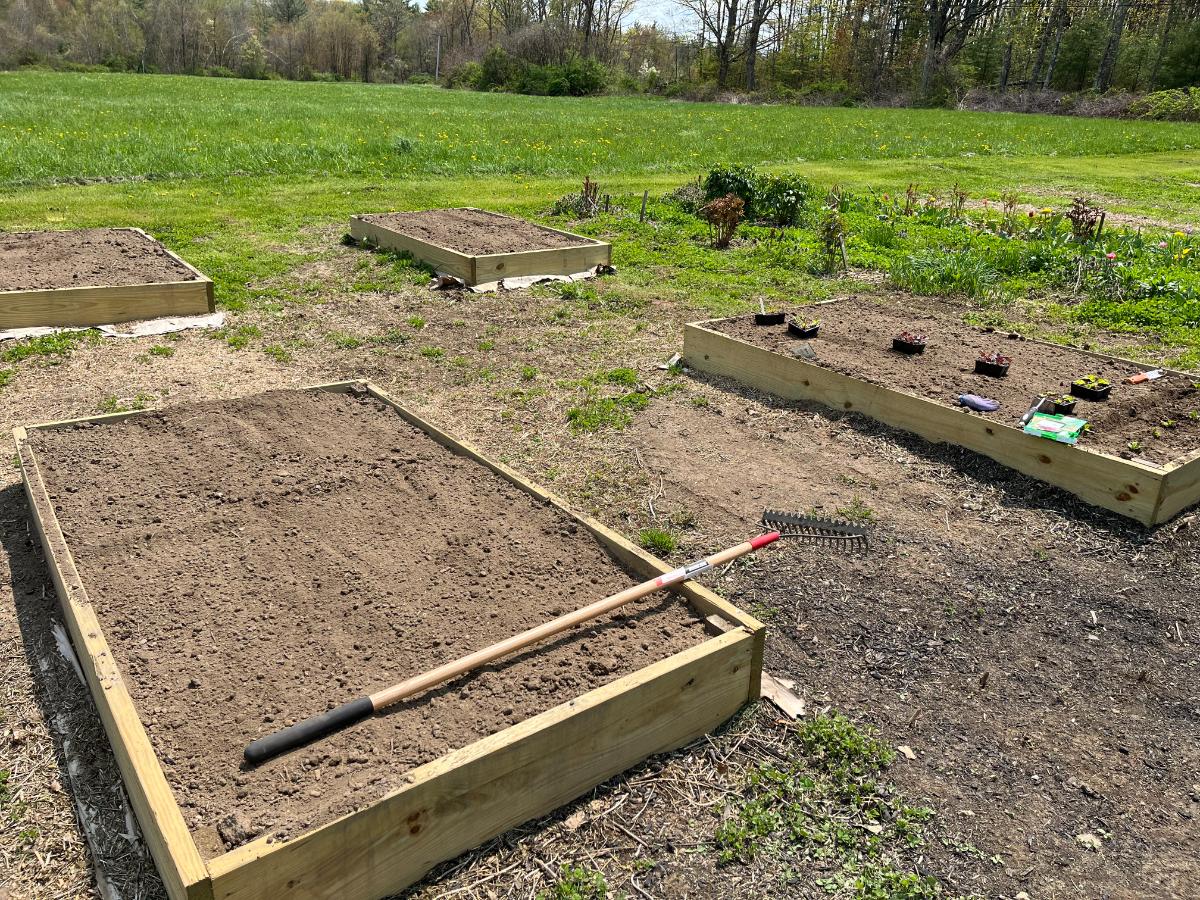
Are frequent rains causing sinkholes in your lawn? Is the dog digging to China in your yard? Moles, voles, and other pests tearing up the place?
Using old potting soil to patch your lawn or fill in some ankle-twisting holes in your lawn or garden beds is the perfect way to put old, spent soil to good use. And yes, you can reseed or plant into it, too. There should be plenty in the ground soil to cover what’s been used up in the old potting mix.
7. Patch Urine Burns in Lawns

Mix old potting soil with grass seed and use the mix as a patch over burned spots in your lawn.
When you do this, it helps to first water the yellowed and burned areas to wash away the urine (unless it has been a long time and you feel rain has adequately done this). This will help dilute any remaining urine to a degree that it is not burning.
Scratch up the spot with a rake, cover the area with the potting soil and seed mixture, and then water again to moisten the patch. The potting soil will give added moisture retention to help the seed stay moist and germinate.
8. Spread in a Thin Layer Over the Lawn
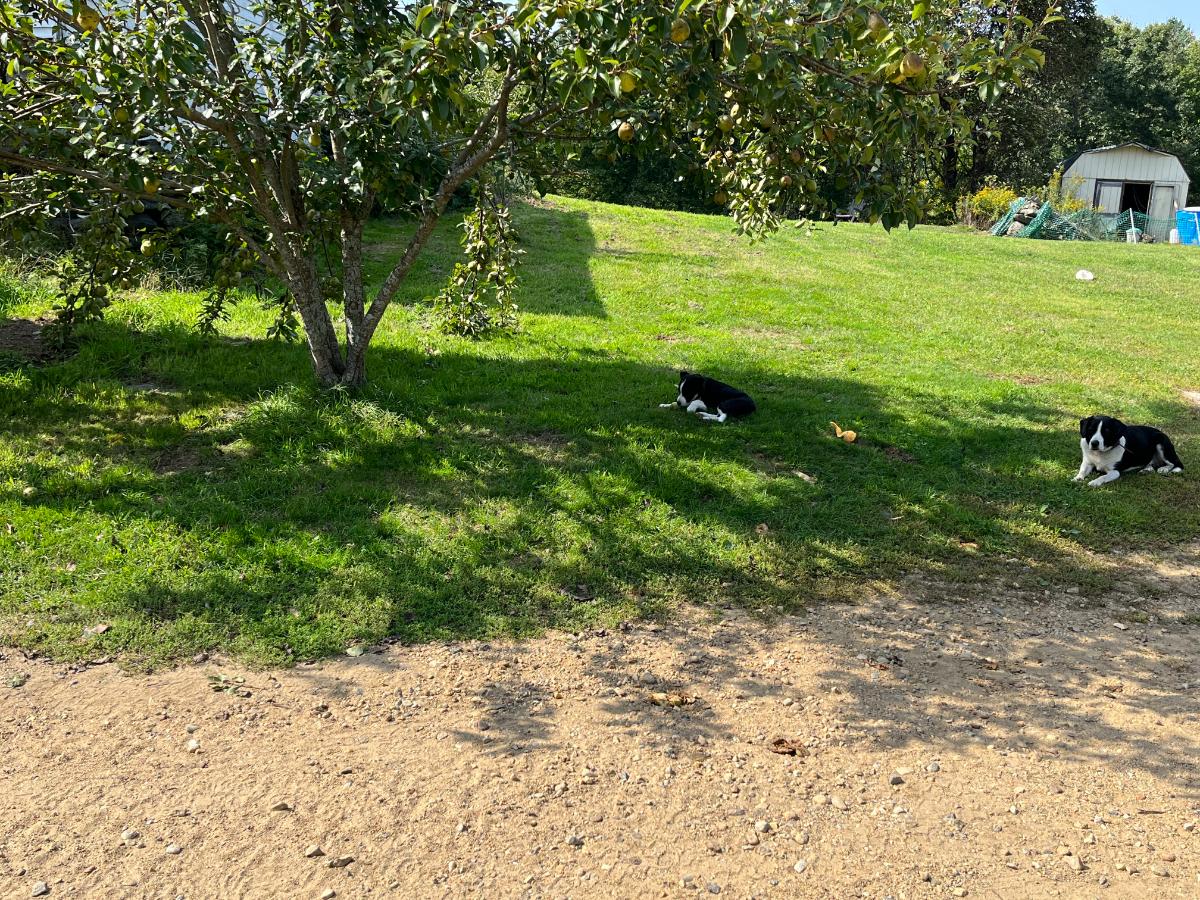
If you just need to discard the depleted potting mix, spread it in a light layer over your lawn. This will add some organic matter to your lawn, but most importantly, it discards the old mix in a safe and useful way that doesn’t cost you money and doesn’t fill up maxed-out landfills.
Just don’t dump it out in clumps or spread it in too thick of a layer, or you might smother the grass you’re growing.
9. Spread in the Garden
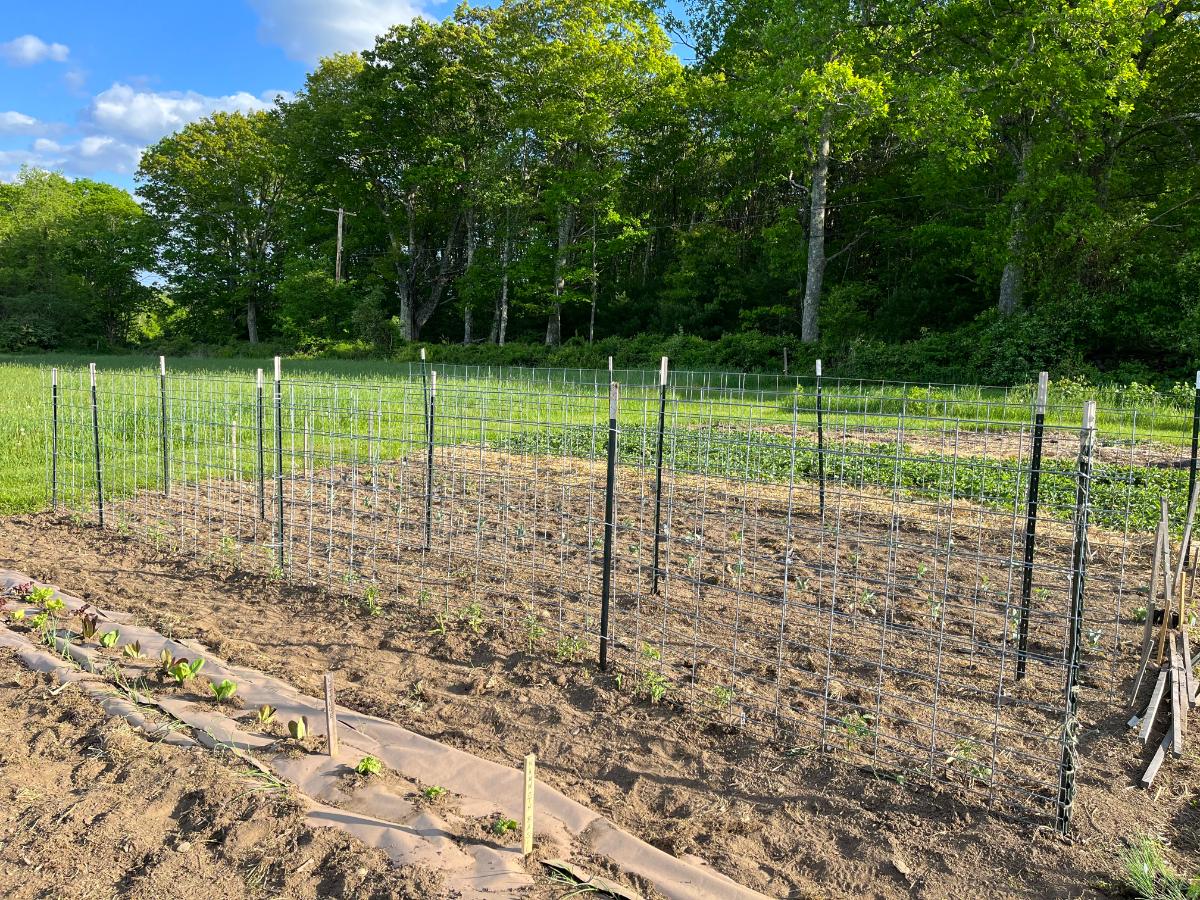
Similarly, you can spread the potting soil over your garden and give it back that way. Again, you don’t need to worry about the fact that there isn’t much left nutritionally in the potting soil because there’s garden soil to go with it.
Whatever organic matter is left will help with moisture retention, though. It’s a good way to “dispose” of old potting mix for free, without harm, and doing a bit of good.
10. Add to the Compost Pile
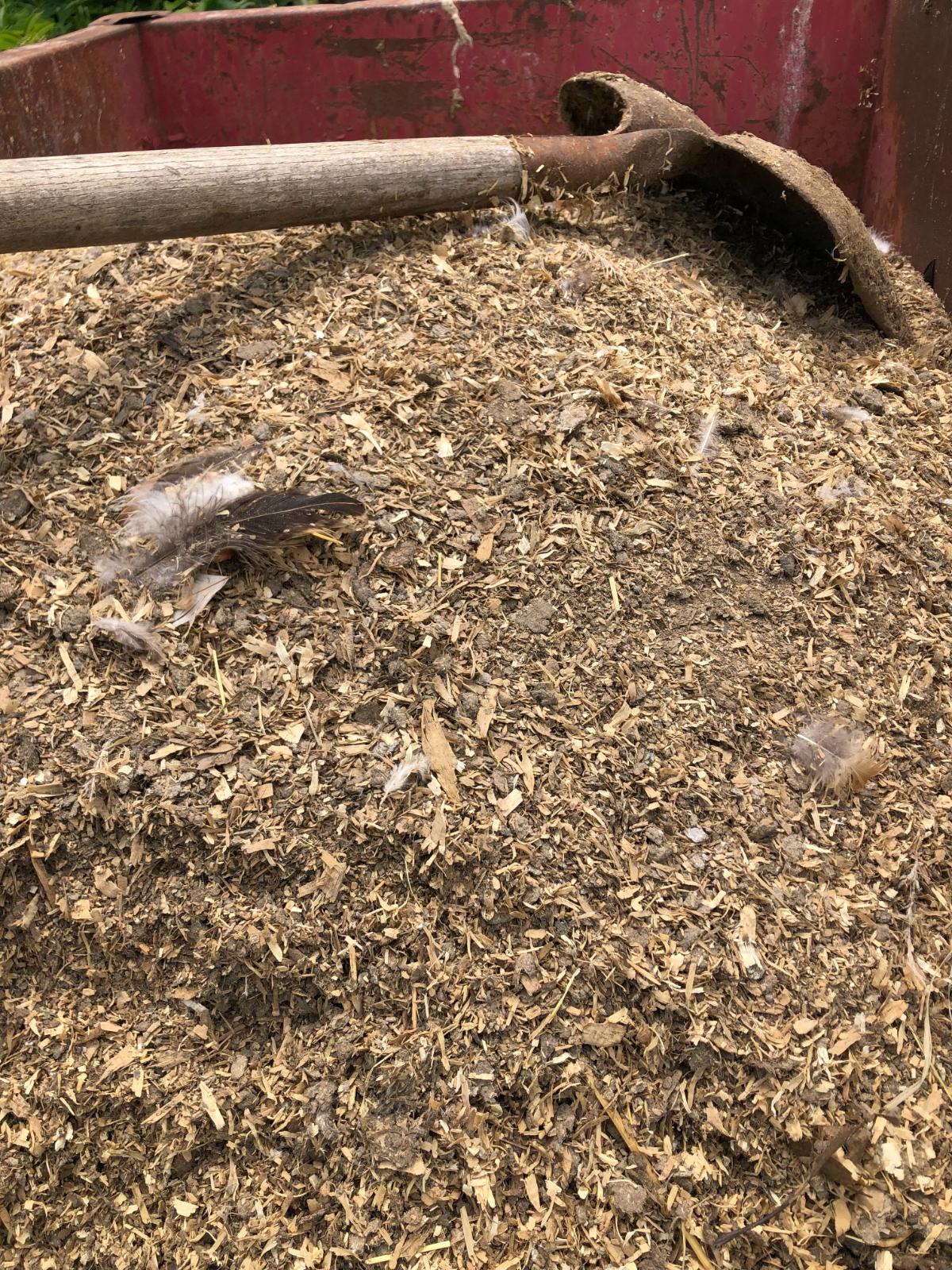
All compost piles need a mix of browns and greens. Adding old, spent potting soil to the compost pile will help to build your pile. The heat in a hot pile should be enough to kill off funguses, insects, and weed seeds, too.
Eventually, when the compost is ready, you’ll be able to get more use out of that old potting soil, too.
11. Cover Compost Holes or Trenches
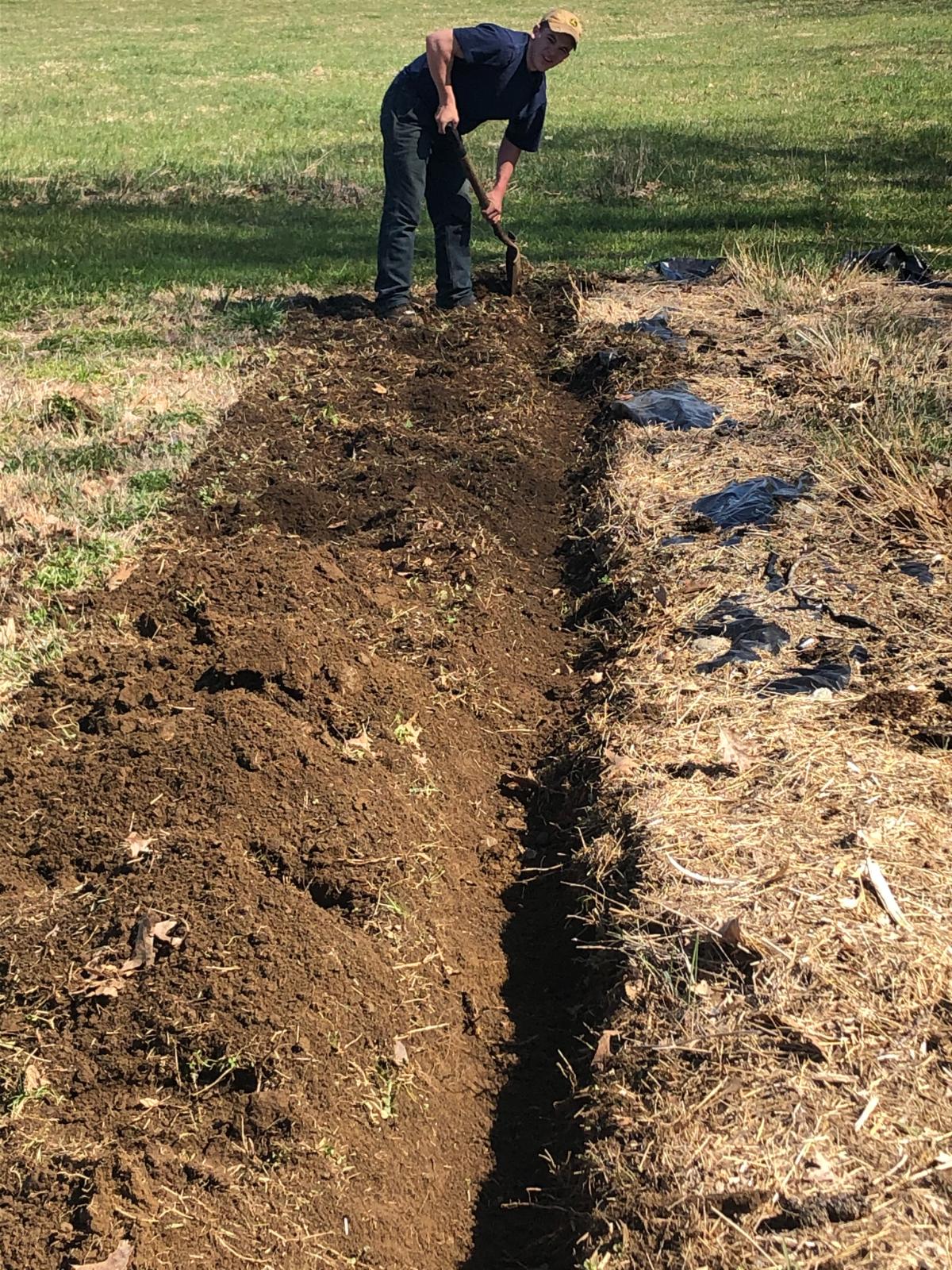
Compost holes and compost trenches are easy ways to compost right in the ground. It is best to cover the holes after you fill them, though. This helps keep odors down and helps to start the composting process.
Old potting soil is a good thing to use as a cover between fillings or when the hole or trench is full. You may need to use more ground soil if you don’t have enough potting soil, but it’s a good place to put the old potting mix and get some new use out of it in the long run.
12. Use to Start a Vermicomposting Bin
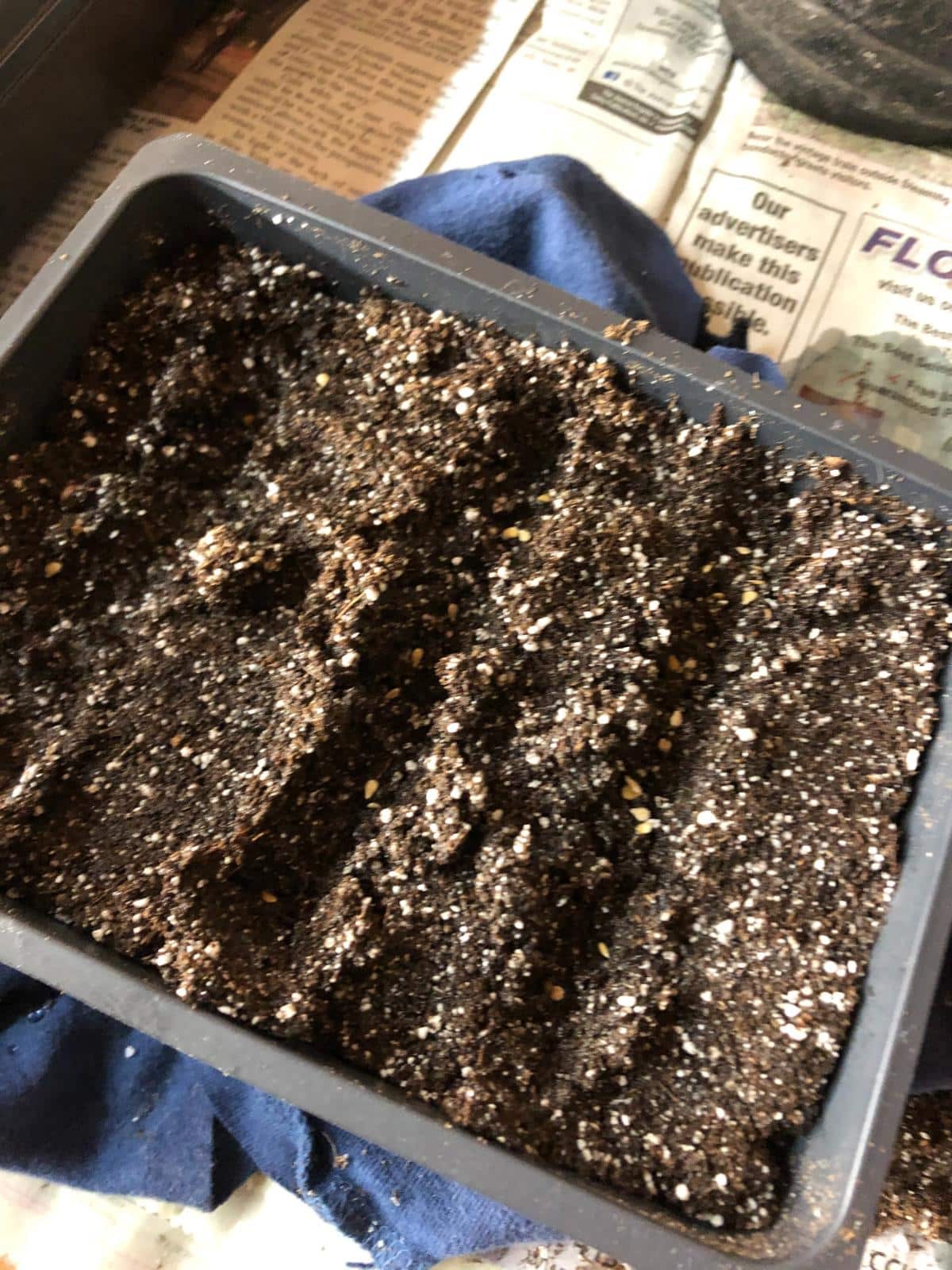
Vermicomposting bins are a great way to recycle and break down household waste. The worm castings from vermicomposting bins are nutrient-dense and have many uses in home and garden planting.
You will need some material for the worms to live and work in, though. Potting soil is often added to these systems. It doesn’t have to be nutritious soil, though—the kitchen scraps you add will provide that. The soil, in this case, is just something for the worms to live, work, and compost in.
Old, used-up potting soil is perfect for this.
13. Extra Soil for Planting Holes
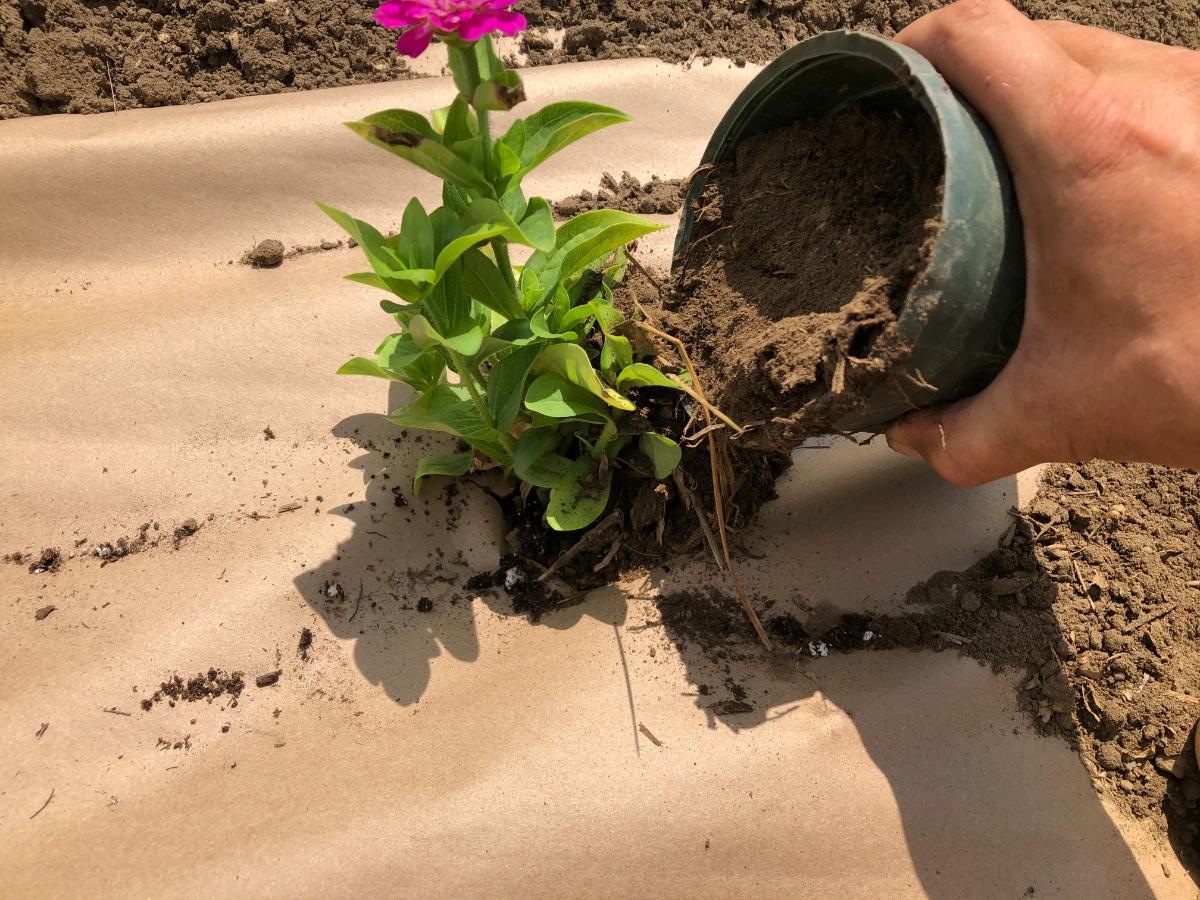
If you’ve ever dug holes for planting and found you don’t have enough soil to backfill the holes, this is a perfect way to use up old potting soil. There’s plenty of nutrients and organic matter in the ground for growing, and the soil can give you that extra you need to top up the planting holes.
14. Fill Holes from Rock Removals.
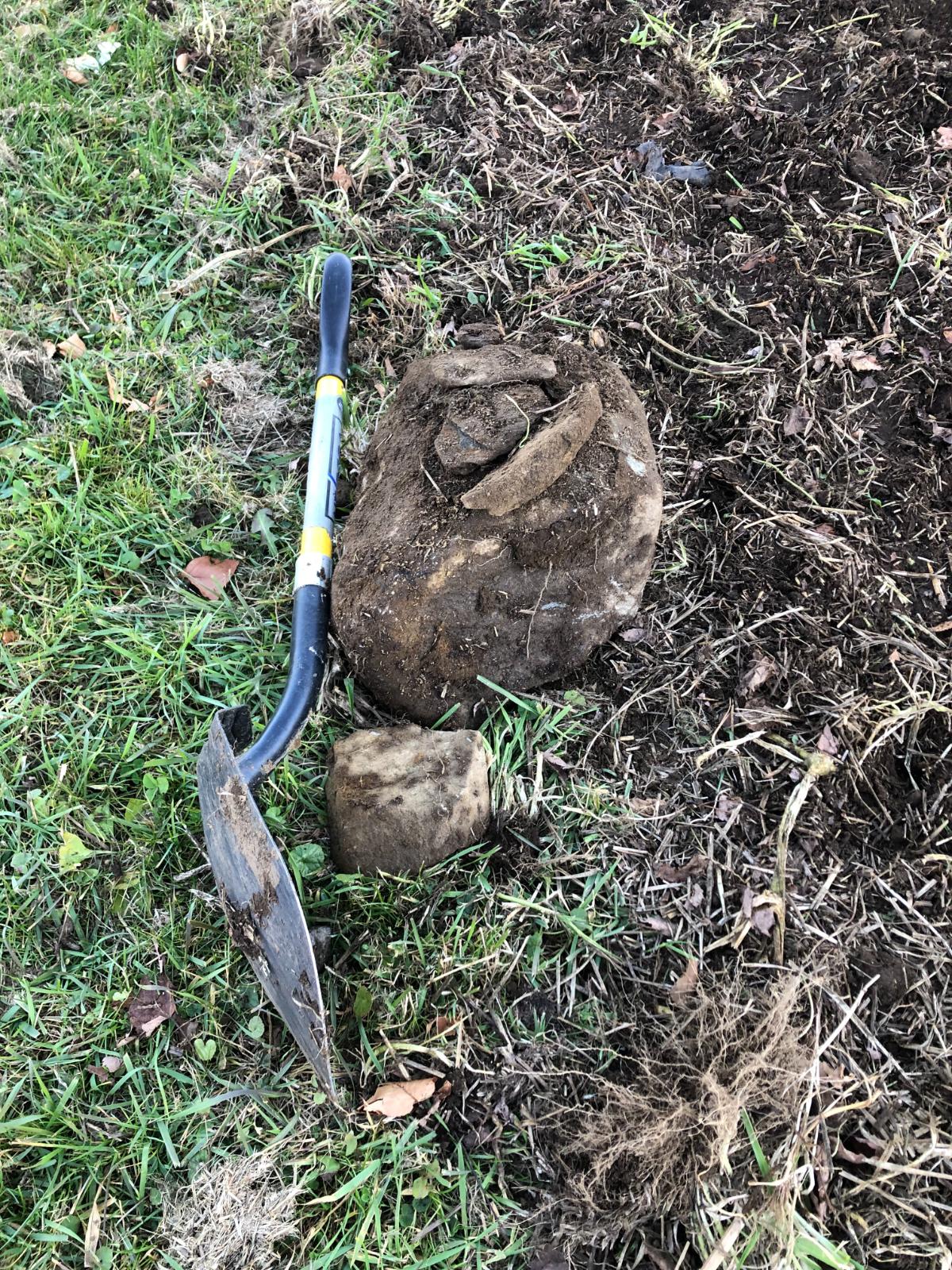
It’s often said that rocks are the biggest crop in the garden. At least, when you’re digging them out or picking them, it can feel that way!
If you’ve had to remove large rocks and you don’t want to take soil from another part of the garden to refill the hole (or if you can’t because it would just leave a hole elsewhere), this is another perfect way to reuse old potting soil.
Again, there’s plenty of good stuff in the ground for things to grow in, but that old soil will allow you to grade the bed evenly without compromising other plants.
15. Fill Eroded Soil and Frost-Heaved Plants over Winter
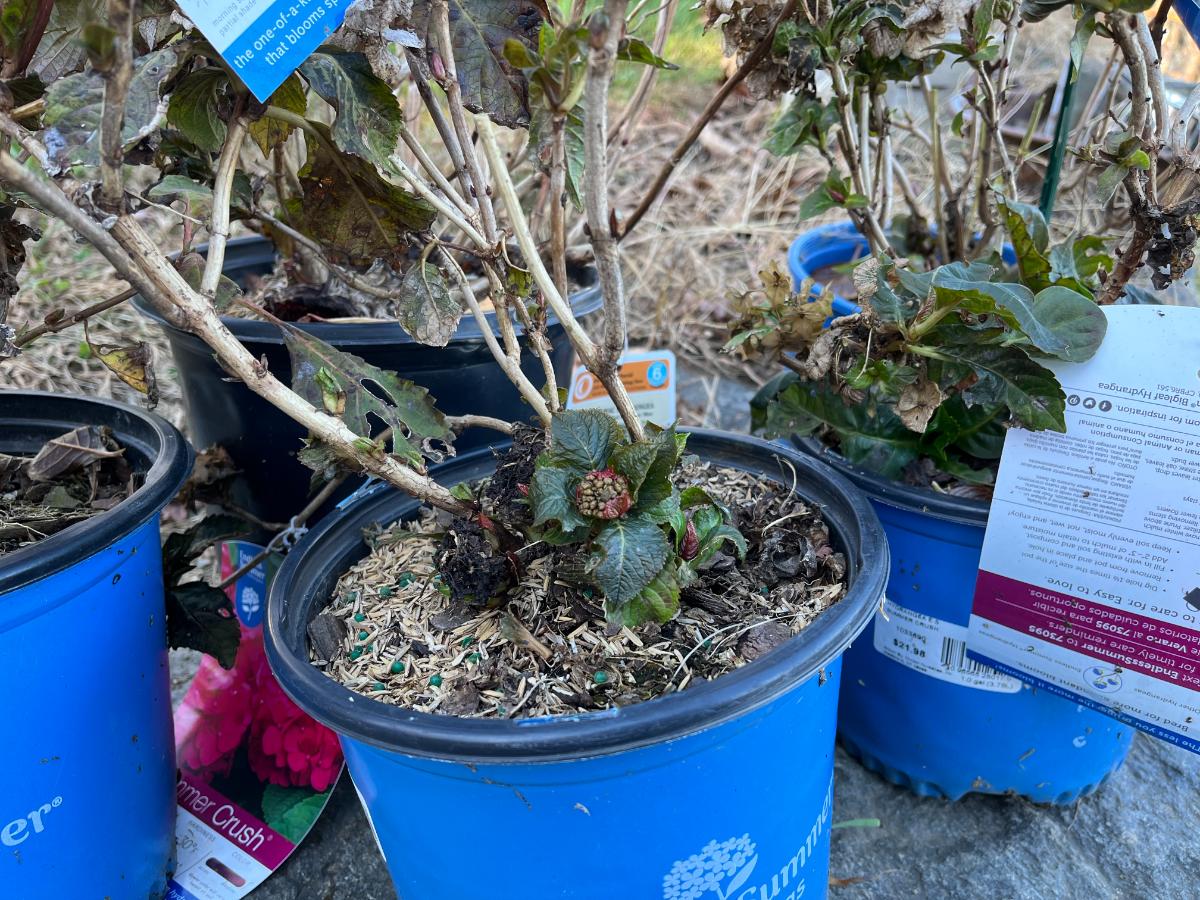
One thing that kills a lot of shrubs and perennials is when their roots are heaved up over the winter. This happens frequently with repeated freeze and thaw cycles. If you leave those roots exposed, you’re likely to lose the plants. However, winter is the hardest time to come up with soil to spare.
Keep an eye on your prized perennials and shrubs over the winter. If you see that they’ve lifted out of the ground, or if the weather has eroded soil away, use the old potting soil to patch and protect those roots.
When (and Where) Not to Reuse Used Potting Mix
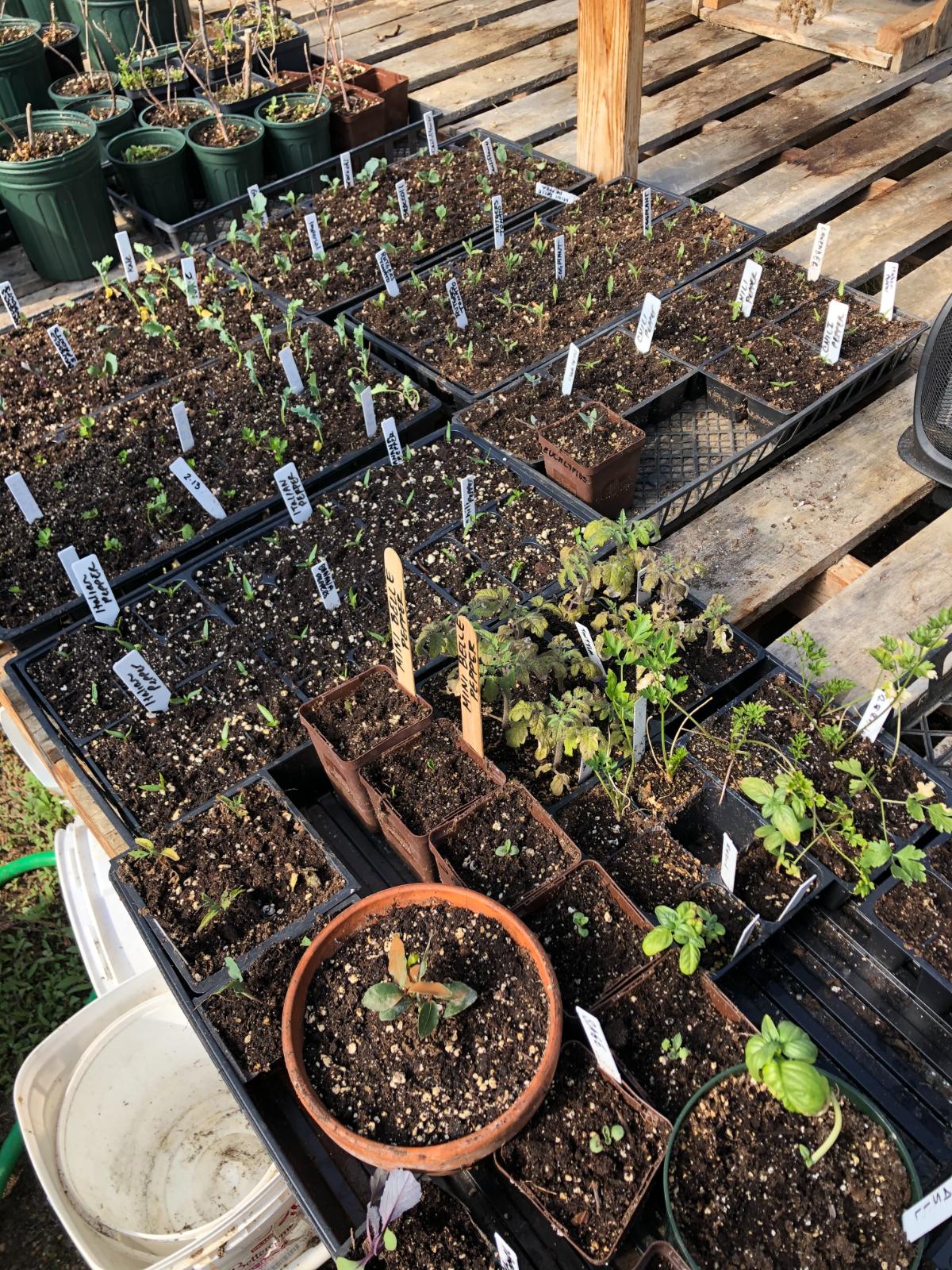
Not all old potting soil should be upcycled or reused. Here are some places where you should not reuse your potting soil and some signs that the soil is beyond reusing:
- Don’t use old potting soil as seedling soil for germinating and seed starting because it has too many large pieces that impede seed growth (fine seed starting medium is best for this purpose)
- Don't reuse old soil for new seedlings (such as potting up in cell packs – these are better off with fresh, clean soil; if you must use old soil for this, it is important to sterilize it first to prevent damping off and other diseases)
- Don't use old potting soil if it is too compacted and hard
- Don't reuse soil that is more than two years old (it won’t support plant life well)
- Don't reuse potting soil that smells rotten or foul
- Don't reuse soil that is riddled with moldy white patches
- Don't reuse soil from plants that died from rot or disease (at least not unless you thoroughly sterilize the soil)
- Don’t reuse insect-infested soil, especially if those insects will damage or kill your plants (unless you can sterilize and kill the insects
Old potting soil can be sterilized with heat. It’s usually a good idea and definitely needs to be done if there is a known disease or insect presence. There are a few ways you can do this – see our article on 3 Easy Ways to Sterilize Used Potting Soil.
With that said, there is never a need to throw out old potting soil, even if it can’t be planted in again. You can still put spent soil in the compost pile, and it is still a fantastic way to bulk up lawn soil or to fill in holes in the yard and garden, where there is plenty of other soil for the plants to get their nutrients from.
Before you throw out that old container full of soil, look for where it can do the most good for you.

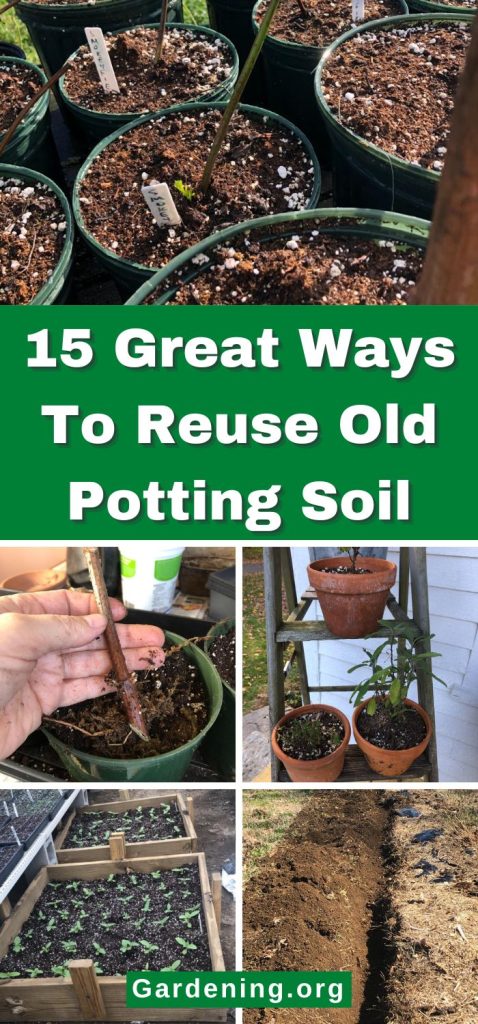
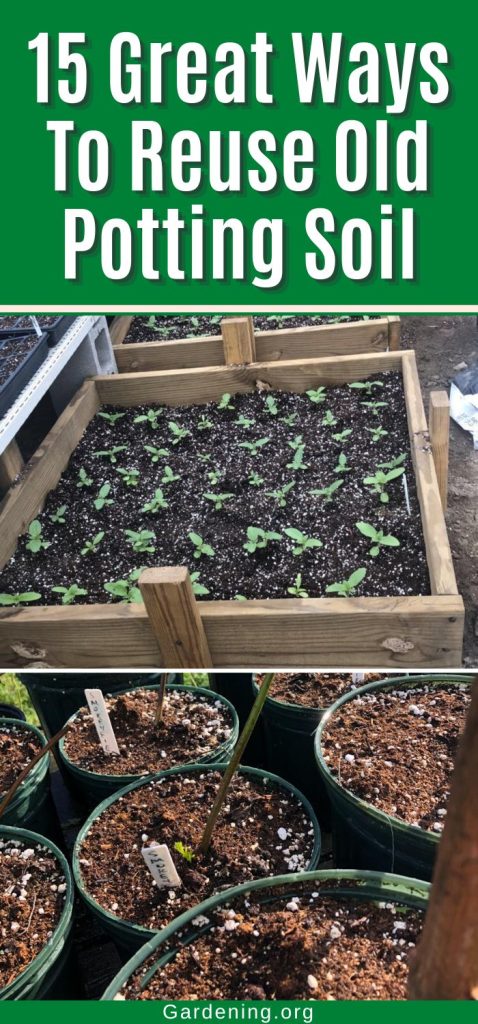
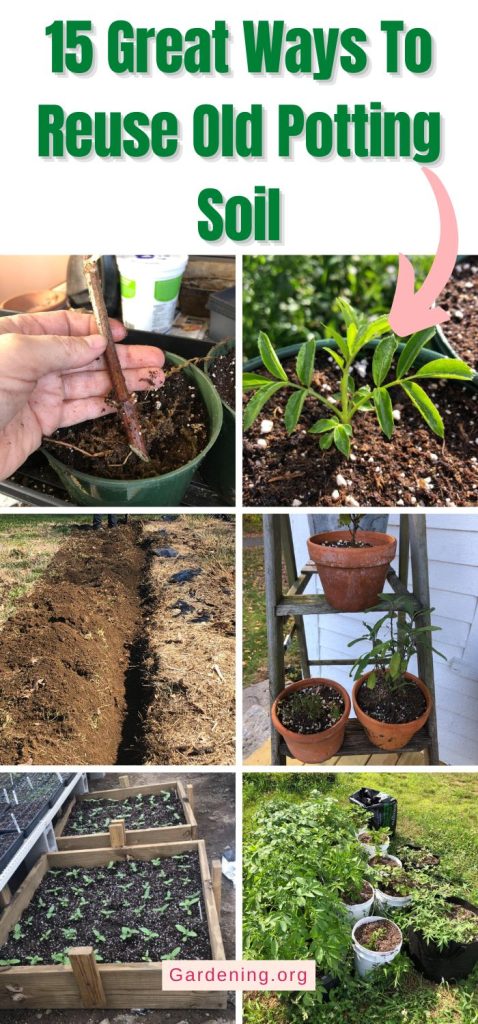
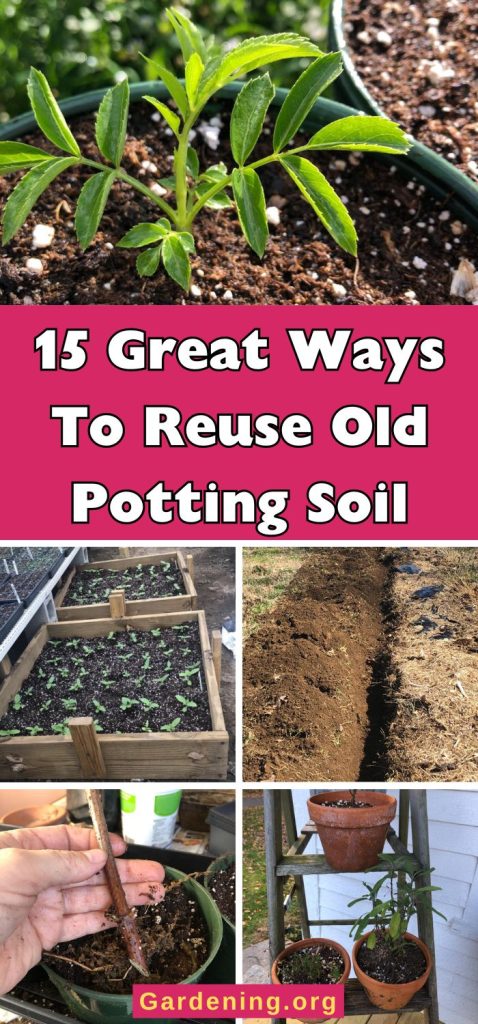




M Coakley
Your email on grasses was so helpful.looking fordward to your info on potting mixture may save a few euros I look forward to your emails a font of information
Maria
Last fall, I put putting soil from my various spent plants into a wheelbarrow which I then forgot our I'm the elements. I found it this February. It had been rained on and it was stinky. What, if anything, can I do with it?
Mary Ward
It's still good to put in the compost pile and to fill holes in the yard and garden with. I probably would not use it to plant in in containers. If you do. I would solarize it to sterilize it.